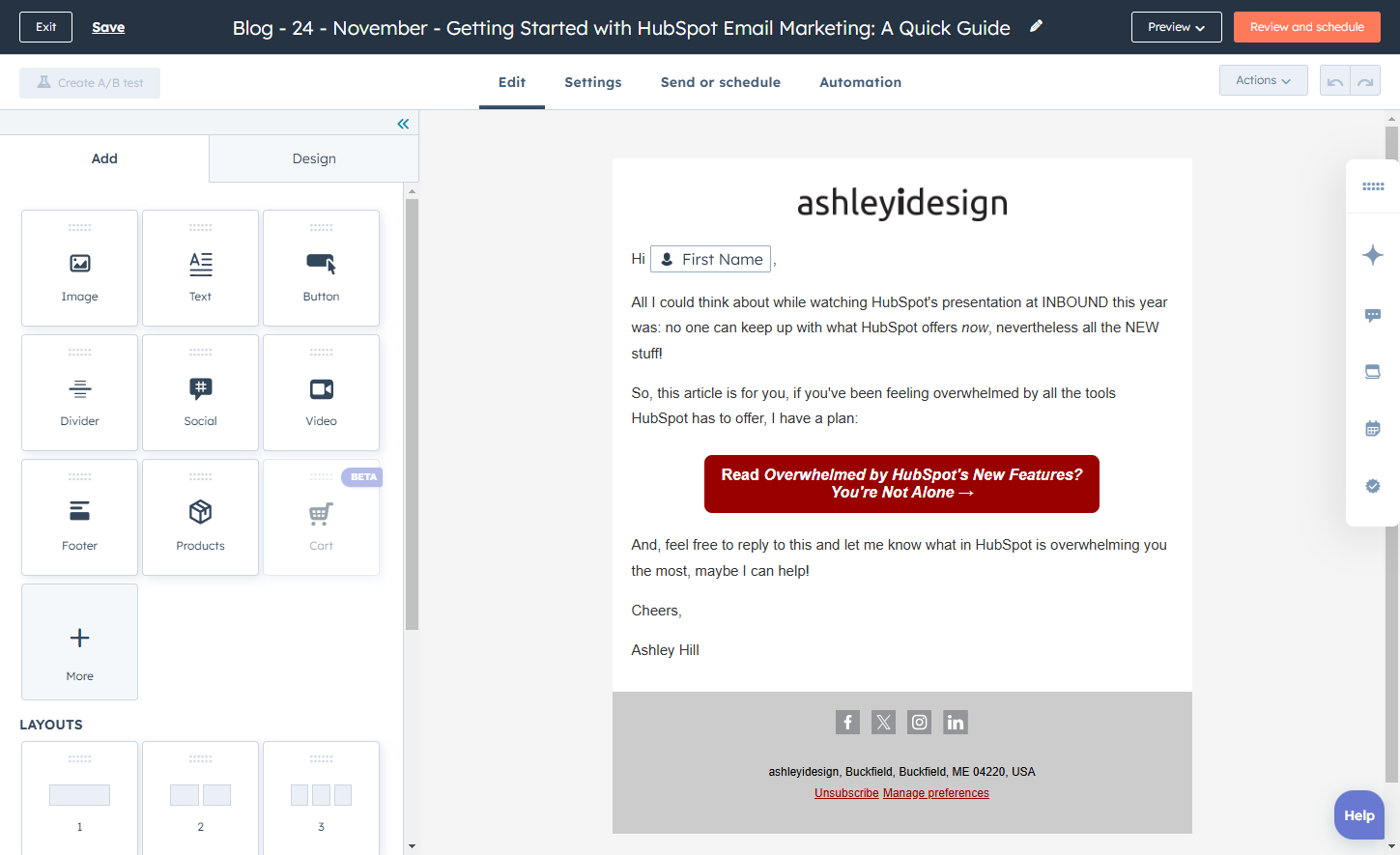
Getting Started with HubSpot Email Marketing: A Quick Guide
 HubSpot’s email marketing tools offer everything you need to create engaging, effective emails that connect with your audience. Whether you're new to email marketing or just getting started in HubSpot, this guide covers the essentials to help you send your first campaign with confidence.
HubSpot’s email marketing tools offer everything you need to create engaging, effective emails that connect with your audience. Whether you're new to email marketing or just getting started in HubSpot, this guide covers the essentials to help you send your first campaign with confidence.
1. Set Up Your Contact List
When I first started organizing my contacts, I quickly realized that a clean, targeted list makes all the difference. Here’s how you can start:
- Import Existing Contacts: Use HubSpot's import tool to bring in contacts from other systems, spreadsheets, or CRMs.
- Build Segmented Lists: Segmenting contacts helps you send relevant messages to each audience group. For example, create lists based on buyer personas, past interactions, or engagement levels.
2. Create Your Email
With a well-prepared list, it’s time to get creative with your email content. Here’s what I recommend:
- Choose a Template: HubSpot’s templates are easy to customize. Pick a layout that matches your goal—whether it’s to inform, engage, or convert.
- Personalize the Content: Personalization goes a long way. Use personalization tokens (like first names) to make emails feel more personal. I love seeing the impact that a personalized subject line has on open rates!
- Optimize for Mobile: Check how your email looks on both desktop and mobile devices. HubSpot’s editor automatically adjusts for mobile, but I’ve found that a quick preview can ensure everything looks just right.
3. Preview and Test Your Email
Avoid sending without testing—small tweaks can make a big difference in performance.
- Preview in Different Email Clients: HubSpot’s preview feature lets you see how emails appear in common email clients (like Gmail and Outlook). I always like to double-check to avoid any surprises.
- Test with A/B Subject Lines: HubSpot lets you create A/B tests to find out which subject line resonates better. I’ve found that simple, clear subjects usually perform best.
4. Send and Track Your Results
Once everything looks good, go ahead and send your email or schedule it for later.
- Schedule for Optimal Timing: Consider when your audience is most likely to check their inbox. Personally, I’ve found weekday mornings to work best, but it’s worth experimenting to see what times work for your audience.
- Monitor Key Metrics: After sending, track metrics like open rates, click-through rates, and engagement. If you notice low engagement, try tweaking your subject lines, call-to-action buttons, or timing.
Email marketing can be a powerful way to connect with your audience, and I hope these tips help you get started. If you have questions as you go, feel free to reach out—I’m always here to help!
I help businesses and marketers build marketing and sales systems that drive leads and scale with ease.
Not sure where to start? Take my marketing quiz and get personalized next steps.



